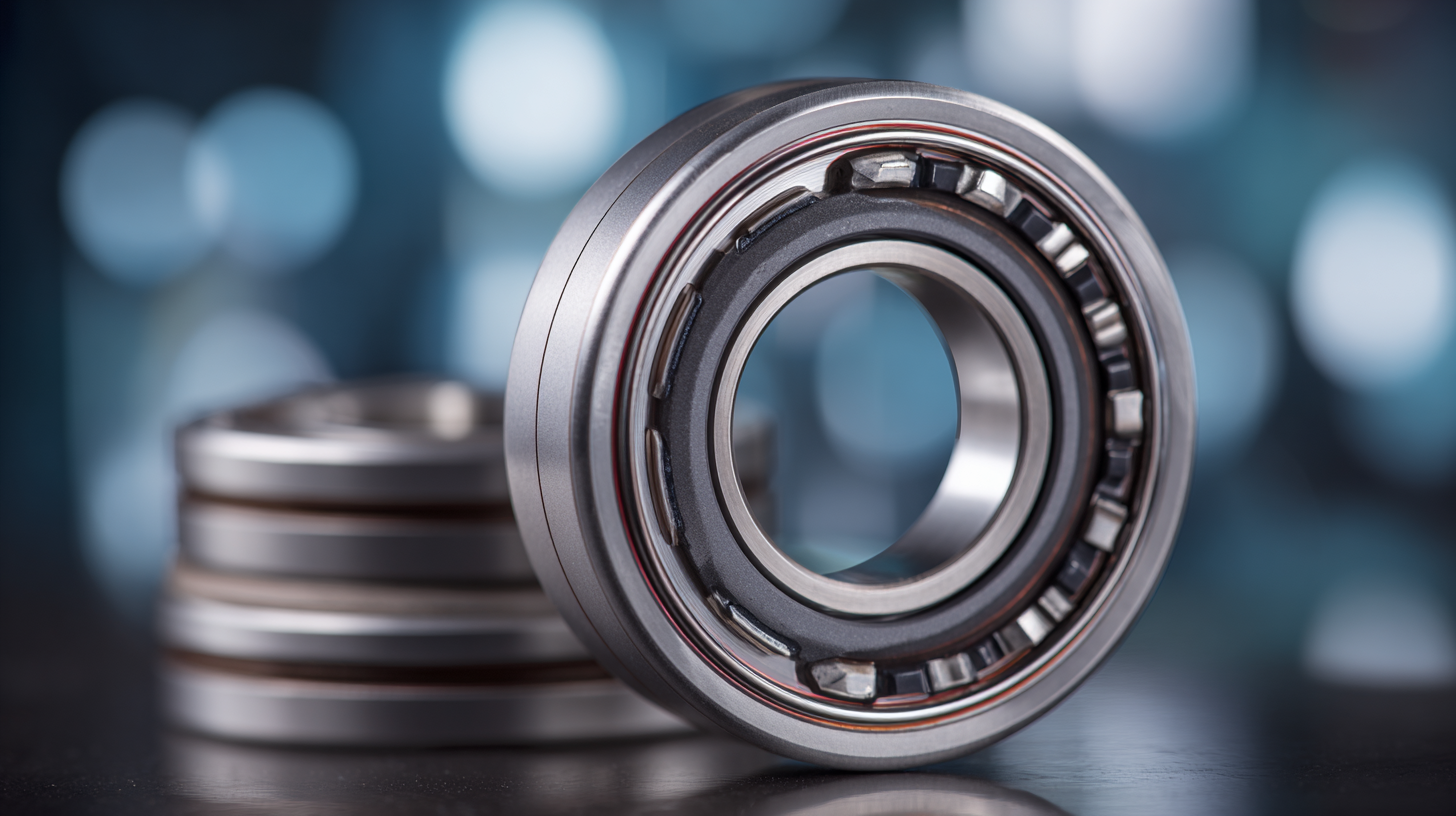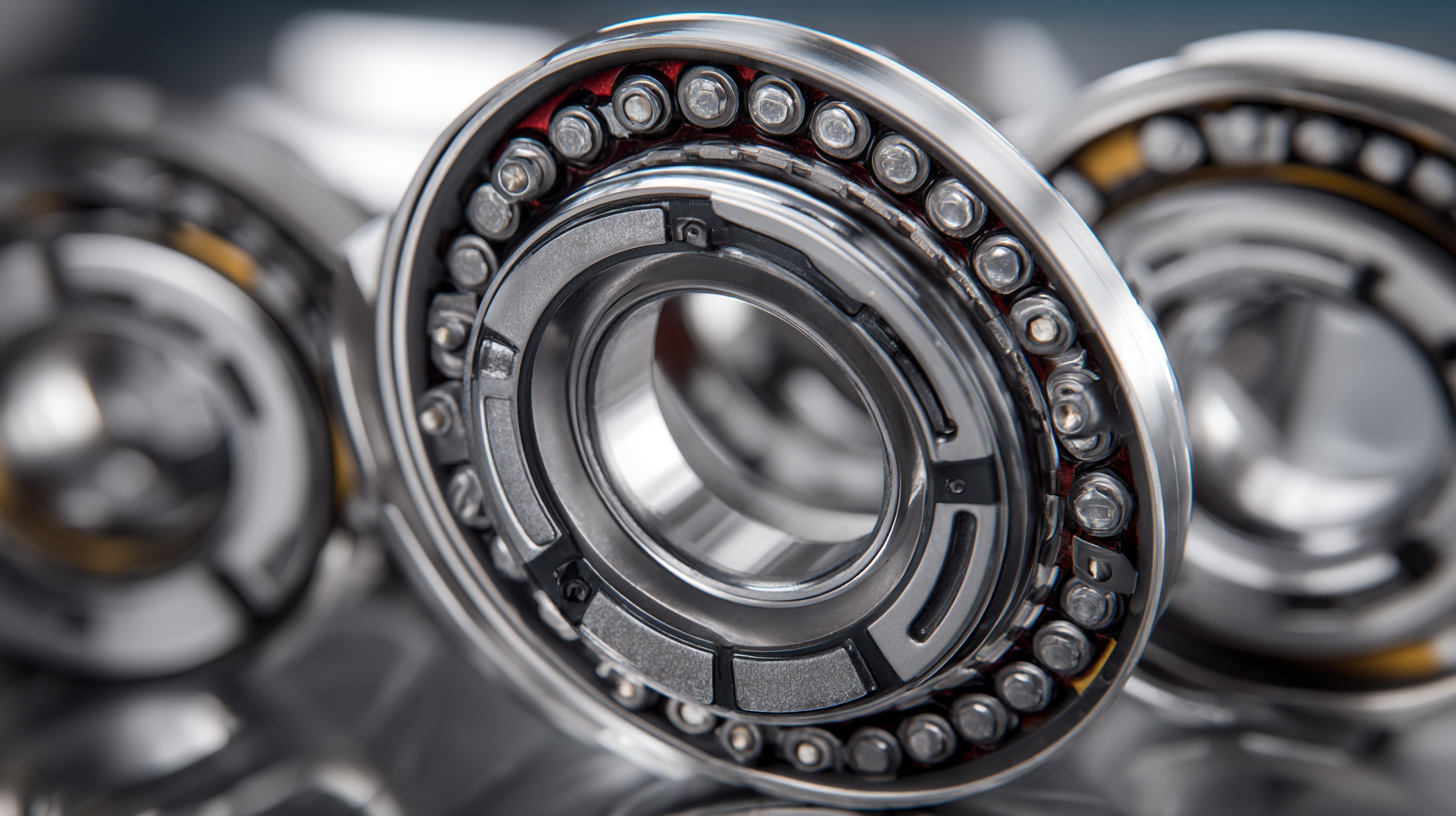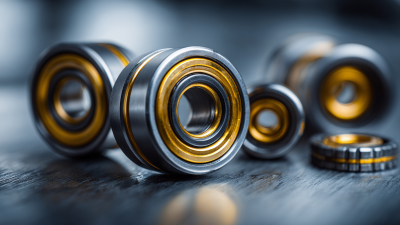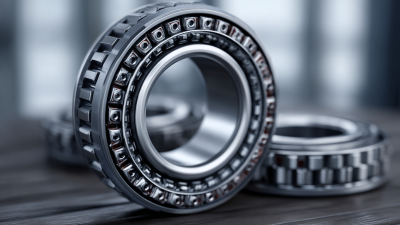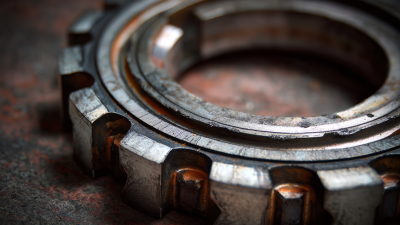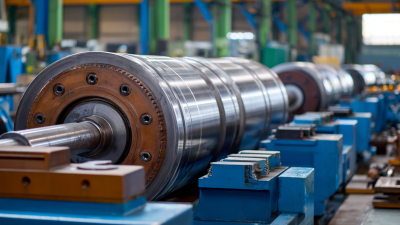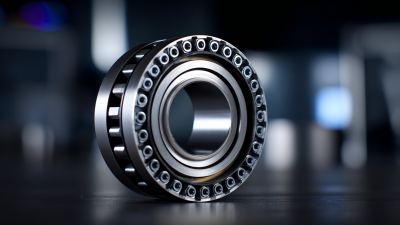How to Choose the Right Energy Efficient Bearings for Your Applications
In today's industrial landscape, the selection of energy-efficient bearings plays a critical role in enhancing operational efficiency and reducing environmental impact.
According to a report by the International Energy Agency (IEA), replacing conventional bearings with energy-efficient alternatives can lead to a reduction in energy consumption by up to 30% in some applications.
This substantial decrease not only contributes to significant cost savings but also aligns with global sustainability goals, as manufacturing industries strive to minimize their carbon footprint.
The "Energy-Efficient Bearing Selection Guide" is designed to assist engineers and procurement specialists in identifying the most suitable bearings for their specific applications.
By considering factors such as load capacity, speed ratings, and lubrication type, businesses can optimize their performance while ensuring compliance with energy efficiency standards.
As market demands evolve, the need for informed decision-making through comprehensive resources becomes increasingly essential in driving both innovation and sustainability in the field of bearing technology.
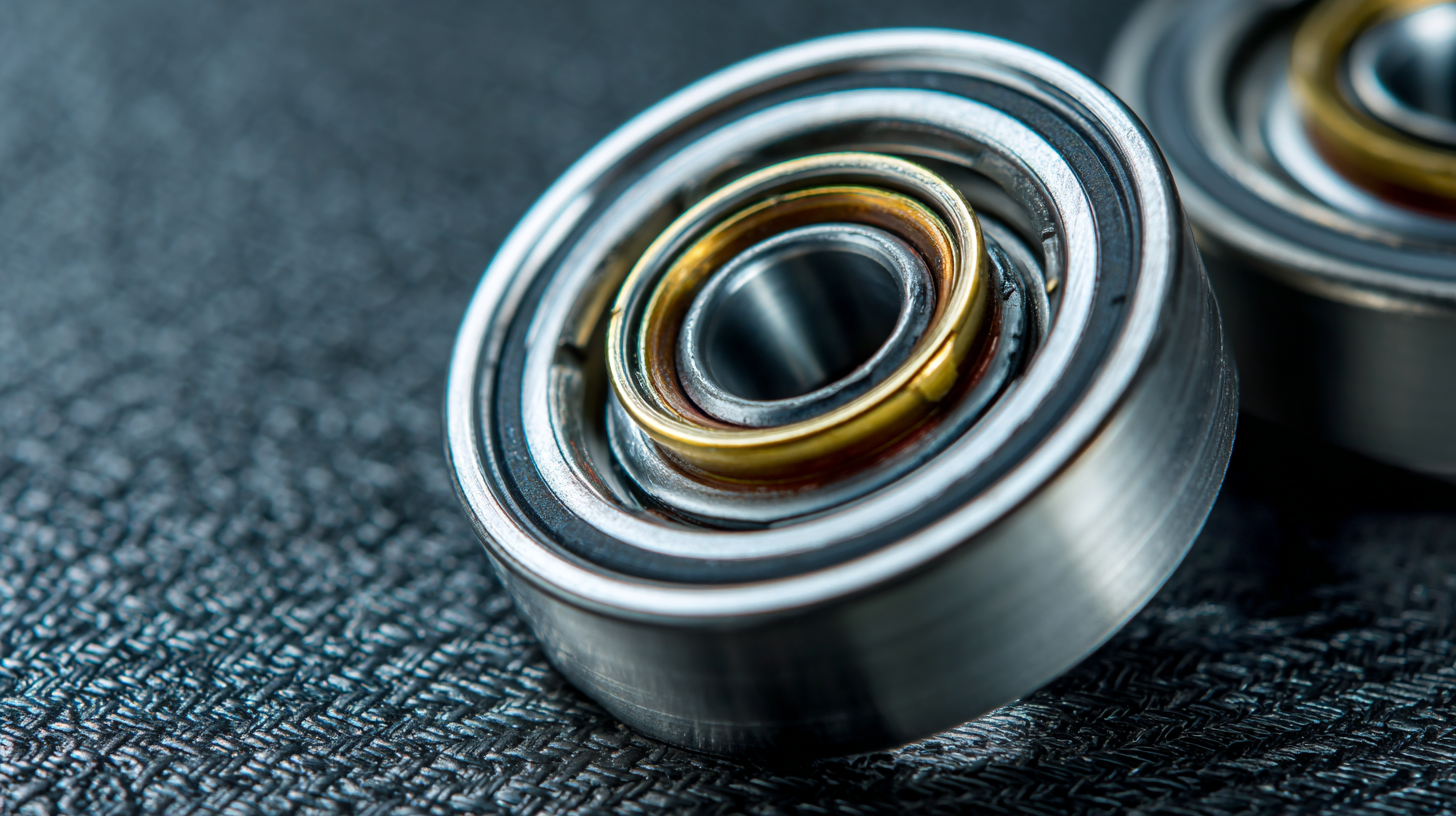
Understanding Energy Efficiency: Key Factors for Bearing Selection
When selecting energy-efficient bearings for various applications, it is crucial to understand the key factors that contribute to overall energy efficiency. According to a report by the International Energy Agency (IEA), approximately 30% of industrial energy consumption can be attributed to mechanical systems, including bearings. Consequently, optimizing bearing selection can lead to significant energy savings and improved performance.
One critical factor to consider is the type of lubrication used in bearings. Studies indicate that bearings with advanced lubrication systems can reduce friction by up to 50%, thereby enhancing energy efficiency. Additionally, the geometry and material of the bearing play vital roles, with hybrid bearings (combining ceramic and steel materials) offering lower friction coefficients and longer service life. This results in less energy wasted through heat generation and mechanical wear, promoting sustainability in industrial operations.
Another essential aspect is the operational environment. Bearings used in harsh conditions may require special materials or coatings to maintain performance and reliability. The American Bearing Manufacturers Association (ABMA) reports that selecting the appropriate bearing design for specific load and speed requirements can result in energy savings of up to 15%. Hence, proper selection based on these key factors is essential for achieving energy efficiency in any application.
How to Choose the Right Energy Efficient Bearings for Your Applications
| Bearing Type |
Energy Efficiency Rating |
Load Capacity (N) |
Speed Factor (RPM) |
Operating Temperature (°C) |
Material |
| Deep Groove Ball Bearing |
A+ |
5000 |
6000 |
-30 to 120 |
Steel |
| Ceramic Hybrid Bearing |
A++ |
4000 |
12000 |
-40 to 150 |
Ceramic & Steel |
| Spherical Roller Bearing |
B |
8000 |
2500 |
-20 to 100 |
Alloy Steel |
| Thrust Bearing |
A |
6000 |
3000 |
-10 to 80 |
Stainless Steel |
| Angular Contact Ball Bearing |
A++ |
4500 |
8000 |
-30 to 120 |
Carburized Steel |
Evaluating Load Capacity and Design for Optimal Bearing Performance
When selecting energy-efficient bearings, evaluating load capacity and design is crucial for optimal performance. Bearings must withstand specific loads while maintaining low friction to enhance overall efficiency. According to the International Organization for Standardization (ISO), the load capacity of a bearing is fundamentally linked to its design, material properties, and lubrication methods. For example, using advanced ceramic materials can increase load capacity by up to 30% compared to traditional steel bearings, making them ideal for high-performance applications.
Tips: Consider the operating conditions of your application, as factors such as temperature, speed, and environmental exposure will affect bearing performance. Also, be mindful of the lubrication type, as advanced lubrication solutions can further improve energy efficiency and longevity.
Design aspects like the bearing's geometry can also influence performance. A well-designed bearing with optimized raceway and roller profiles can reduce stress concentrations and promote even load distribution. Studies have shown that implementing improved design features can lead to a reduction in energy losses of 15-25%. Prioritizing these considerations when selecting energy-efficient bearings is essential to enhance operational performance and cost-effectiveness.
Materials Matter: Choosing Eco-Friendly Bearing Alternatives
When selecting eco-friendly bearing alternatives, the choice of materials is crucial.
Leather-like materials, increasingly employed in manufacturing, provide a sustainable option due to their biodegradable properties and lower environmental impact compared to traditional synthetic alternatives.
Companies across regions such as Indonesia and Italy are leading the way in integrating these materials into their production processes, creating products that not only fulfill functional requirements but also contribute positively to environmental goals.
Furthermore, the advancement of materials science has ushered in an era where artificial intelligence is revolutionizing construction materials.
This innovation is not limited to bearings but extends to various applications, including concrete and composites, optimizing their performance while minimizing ecological footprints.
As industries seek to adopt sustainable practices, embracing such materials that are environmentally friendly and efficient will be essential for future developments in this field.
Assessing Operating Conditions: Temperature, Speed, and Lubrication Needs
When selecting energy-efficient bearings for specific applications, assessing the operating conditions is crucial, particularly in terms of temperature, speed, and lubrication needs. According to a report by the American Bearing Manufacturers Association (ABMA), bearings operating at elevated temperatures can experience significant decreases in life span due to thermal degradation of materials. It’s essential to select bearings rated for the anticipated operating temperature range, often between -30°C to 120°C, to ensure performance and longevity.
Speed is another critical factor. High-speed applications require bearings designed to minimize friction and heat generation, as excess heat can lead to failure. Research from the International Journal of Mechanical Engineering notes that properly selected bearings can improve efficiency by up to 30% in rotating machinery by reducing unnecessary drag. When considering lubrication, it's important to choose the correct type and quantity to maintain optimal performance while ensuring energy efficiency. A study from Tribology & Lubrication Technology emphasizes that advanced lubrication solutions can reduce energy loss in bearings by as much as 15%, highlighting the significance of tailored lubrication strategies in bearing selection.
Identifying Long-Term Cost Savings with Energy Efficient Bearings
When considering energy-efficient bearings for your applications, it's essential to identify the long-term cost savings they can offer. Energy-efficient bearings are designed to reduce friction and improve efficiency, which directly correlates to lower energy consumption in machinery. By selecting these bearings, businesses can significantly diminish their operational costs over time, as reduced energy use leads to decreased utility bills.
Additionally, energy-efficient bearings often come with enhanced durability and performance characteristics. Their design minimizes wear and tear, which can extend the lifespan of the equipment they support. This longevity not only contributes to fewer replacement costs but also decreases downtime associated with maintenance. Therefore, investing in high-quality energy-efficient bearings is not just about immediate savings; it’s about cultivating a sustainable operational model that fosters long-term financial benefits.

Home
Products
Industrial Bearings
Deep Groove Ball Bearings
Self-Aligning Ball Bearings
Angular Contact Ball Bearings
Cylindrical Roller Bearings
Taper Roller Bearings
Spherical Roller Bearings
Bearing housing or Accessories
Miniature Bearing
Thrust ball bearing
Radial Spherical Plain Bearing
Pillow Block Bearing
Needle Roller Bearings
Automotive Bearings
Agricultural Bearings
Special Material Bearings
Industry Application
About Us
News
Contact Us




